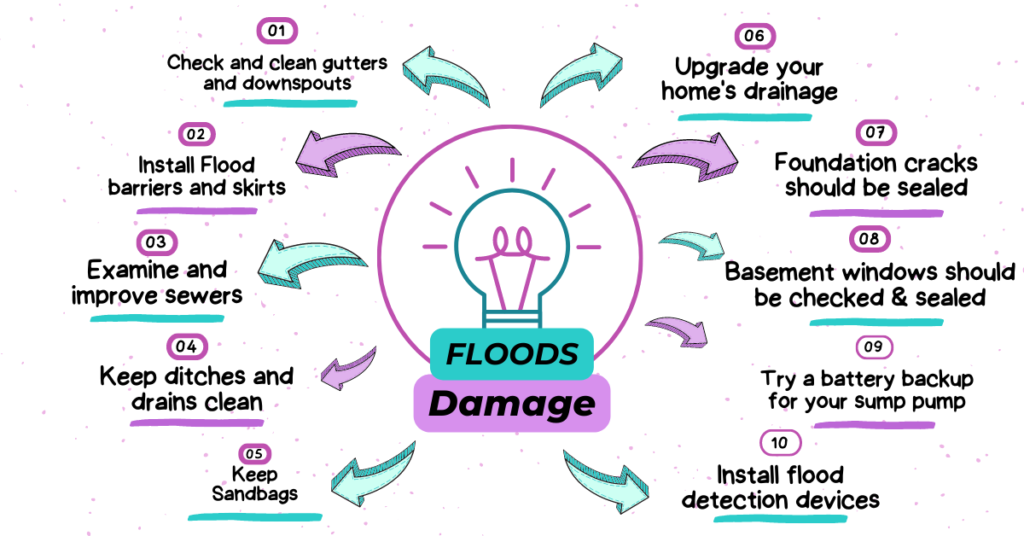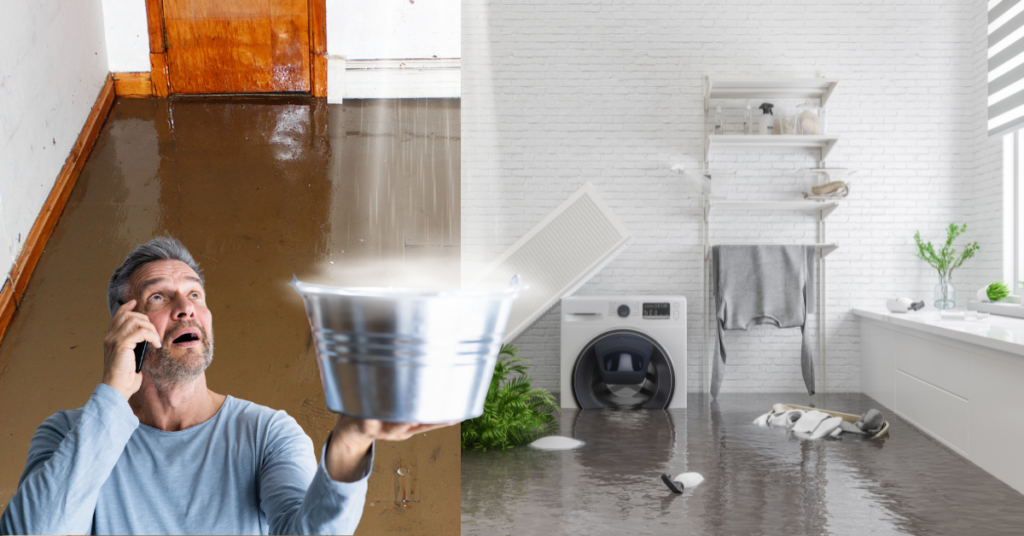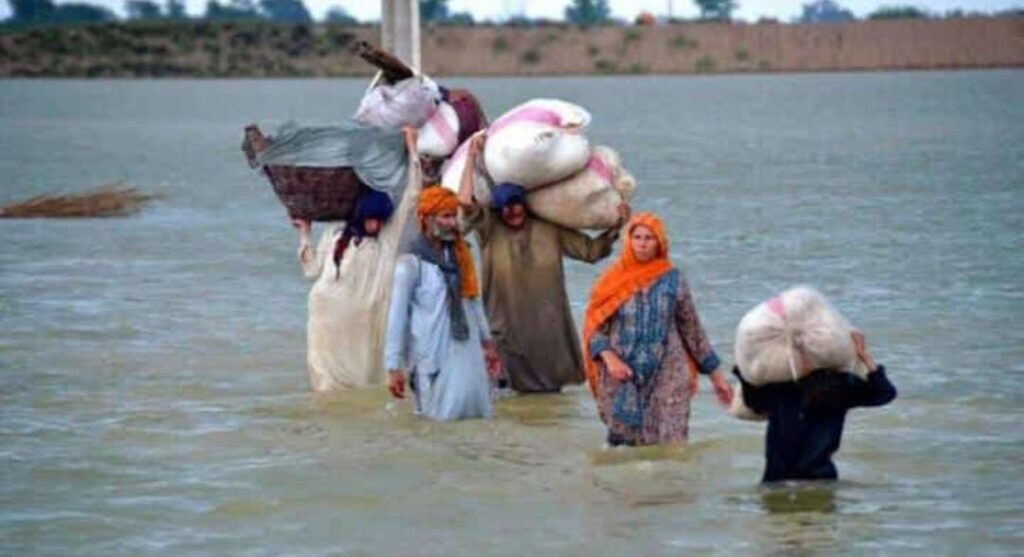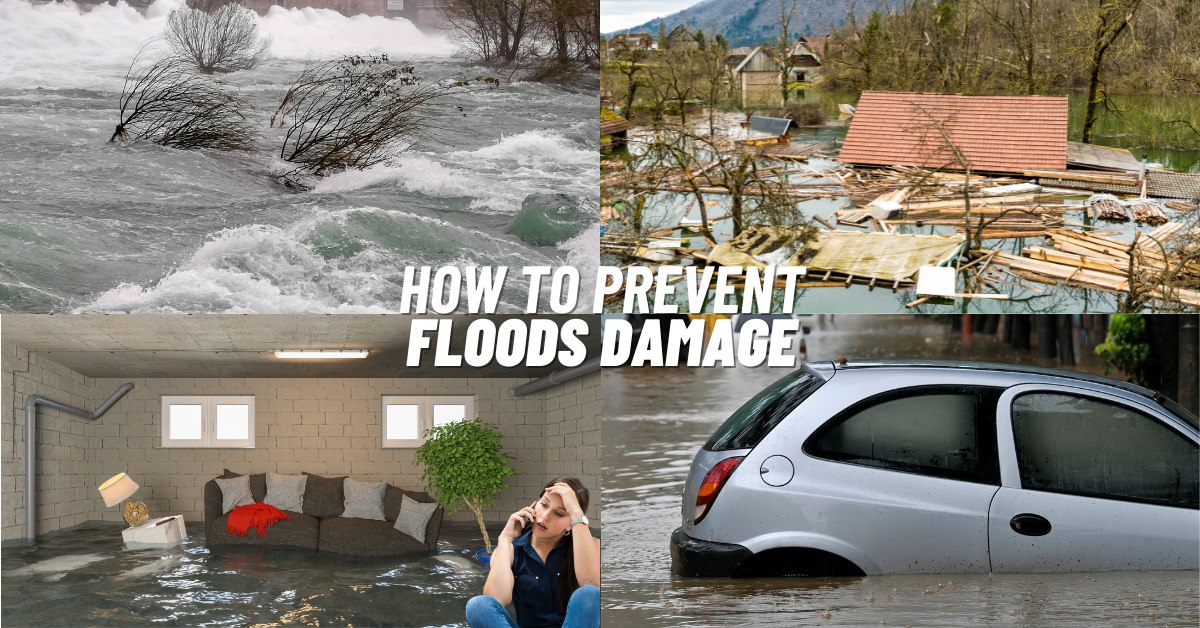Water that usually overflows onto the dry land causes flooding. Storm surges, rapid snowmelt, and failed levees or dams are only a few potential flooding causes. It only takes a few inches of water to cause floods damage, or it can completely engulf a property so how to prevent floods damage? Flash floods can happen in minutes, while longer-lasting floods can persist for weeks or months. The most frequent and extensive weather-related natural disasters are floods.
If you ask how to prevent floods, you must know that flash floods are more dangerous than normal floods. With all the destructive potential of a flood and lightning-fast velocity, flash floods are the most deadly type of flood. Flash floods happen when severe rainfall surpasses the soil’s capacity to absorb it. It is also possible for rivers to overflow their banks quickly when water floods ordinarily dry creeks or streams. The time needed to alert and protect the public is severely reduced because they might occur within minutes after the precipitation that causes them.
How Floods Damage the World in the Past:
There were 2.3 billion individuals in the world who were affected by floods between 1995 and 2015, making them the most common natural disaster. A serious social and economic threat is already posed by urban cities flooding in many areas worldwide. 91% of the cities are affected by them, and they have cost the economy more than USD 1 trillion in damages since 19802. The number of those affected will have doubled by 2030 compared to 2010, which is made worse by climate change. So it is necessary to take precautionary measures and read the ways at TipsKrips how to prevent floods damage.
Consider the Suggestions for How to Prevent Floods Damage:
Your home or place of business might suffer greatly from flooding and rainwater. Flooding is more serious if you are in a flood plain or flood zone. If you want to avoid a flood altogether, consider the following actions.

Floods damage from storms, hurricanes, or other natural catastrophes is typically not covered by a standard homeowner’s insurance policy, but damage from an overflowing sink or bathtub is. To learn more about the coverage provided by your policy, speak with your insurance agent.
Check to determine if buying flood insurance makes sense if you live in a high-risk location.
Keep Sandbags:
Sandbags can stop flooding and water from entering entrances or low windows if flood levels rise and water is nearing your property. Keep sandbags on hand for emergencies if you live in a region with a high risk of flooding.
Install Flood barriers and skirts:
Consider installing flood barriers or skirts around air bricks, windows, and doors. This will prevent water from entering your house during a flood.
Examine and improve sewers:
Backflow prevention valves (one-way valves) should be placed in all domestic drains. If you have them, the one-way valves stop sewer backups from getting into your house.
Basement windows should be checked & sealed:
Ensure the basement or low windows are properly sealed and plugged to increase their water resistance and stop flooding. You should also consider installing new windows if your current ones are ancient. The improved seal found in newer windows can decrease the chance of water entering your home. Energy efficiency can also be improved with new windows.

Foundation cracks should be sealed:
Learn how to stop my house from flooding when it rains. Seal openings like utility and exhaust penetrations, check your foundation frequently, and plaster foundation cracks with masonry or mortar as part of your yearly house maintenance. It keeps your house from floods damage.
Upgrade your home’s drainage:
Keep an eye out for any accumulated rain or flood water near your property when it rains. Look closely at the ground level. Your home’s or company’s foundation should be set back from the slope of the earth. You should bring in sand and dirt to fix the grading. To provide the water somewhere to go during major storms, you may need to add drainage where it collects. This is the best way of learning how to prevent floods damage.
Check and clean gutters and downspouts:
At least once a year, and more frequently if there are many trees close to your property, check and clean the gutters and downspouts to keep protection from flood. You can use a leaf blower or gloves to clean the gutters and a flexible water hose with a high-pressure attachment to make sure the downspouts are clear. A landscaping or lawn maintenance professional can also handle this for you so that you can protect against floods damages.
Keep ditches and drains clean:
It’s best to avoid pile-up mulch, leaves, or other trash in your yard where it can flush into the sewer system or obstruct drainage channels. If you live in a neighborhood with plenty of trees, rake your lawn frequently, bag the leaves, and put them out at the curb for collection. Ensure the neighboring storm drains are unblocked by using a rake to remove any apparent obstruction. Contact your city’s or county’s water or sewer department for more serious obstructions.
Try a battery backup for your sump pump:
Check the sump pump frequently. During periods of severe rain, be sure it can evacuate water quickly enough. Consider installing a battery backup or UPS to keep your drainage system running during a power outage until the electricity is restored. Additionally, you can get sump pumps with a built-in battery backup.
Install flood detection devices:
Numerous alarms, sensors, and systems can be installed in your house or company to notify you of any water or leaks. Your smart home or home security system may be integrated with more sophisticated water or leak detection devices to warn you of water before a crisis occurs or prevention from any floods damage.
What should you do after the floods damage?
After the Floods Damage
- Skip the moving water.
- Only go home after the authorities say it’s okay.
- People in flooded areas will receive assistance from emergency personnel.
- Be careful.
- Unless specifically instructed by police, fire, or a relief group, stay away from damaged areas.
Why are floods in urban areas particularly dangerous?
Urban floods are more dangerous because they affect more people because more people live per square mile, and many are close to one another. Fewer escape routes make it difficult for everyone, notably those living at lower elevations, to get to higher ground for essential protection mostly urban people ask for how to prevent floods damage because they suffer the most from it.







